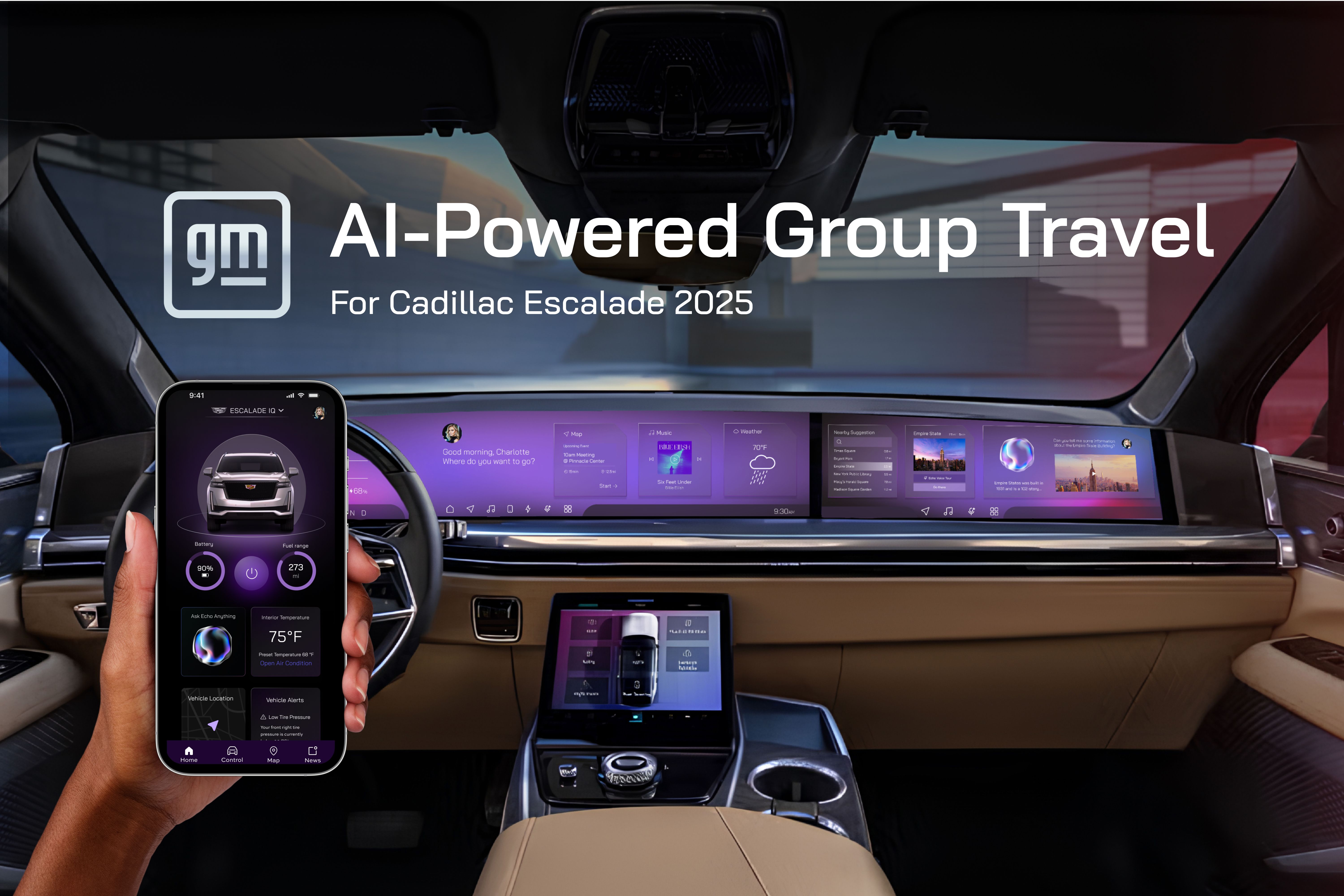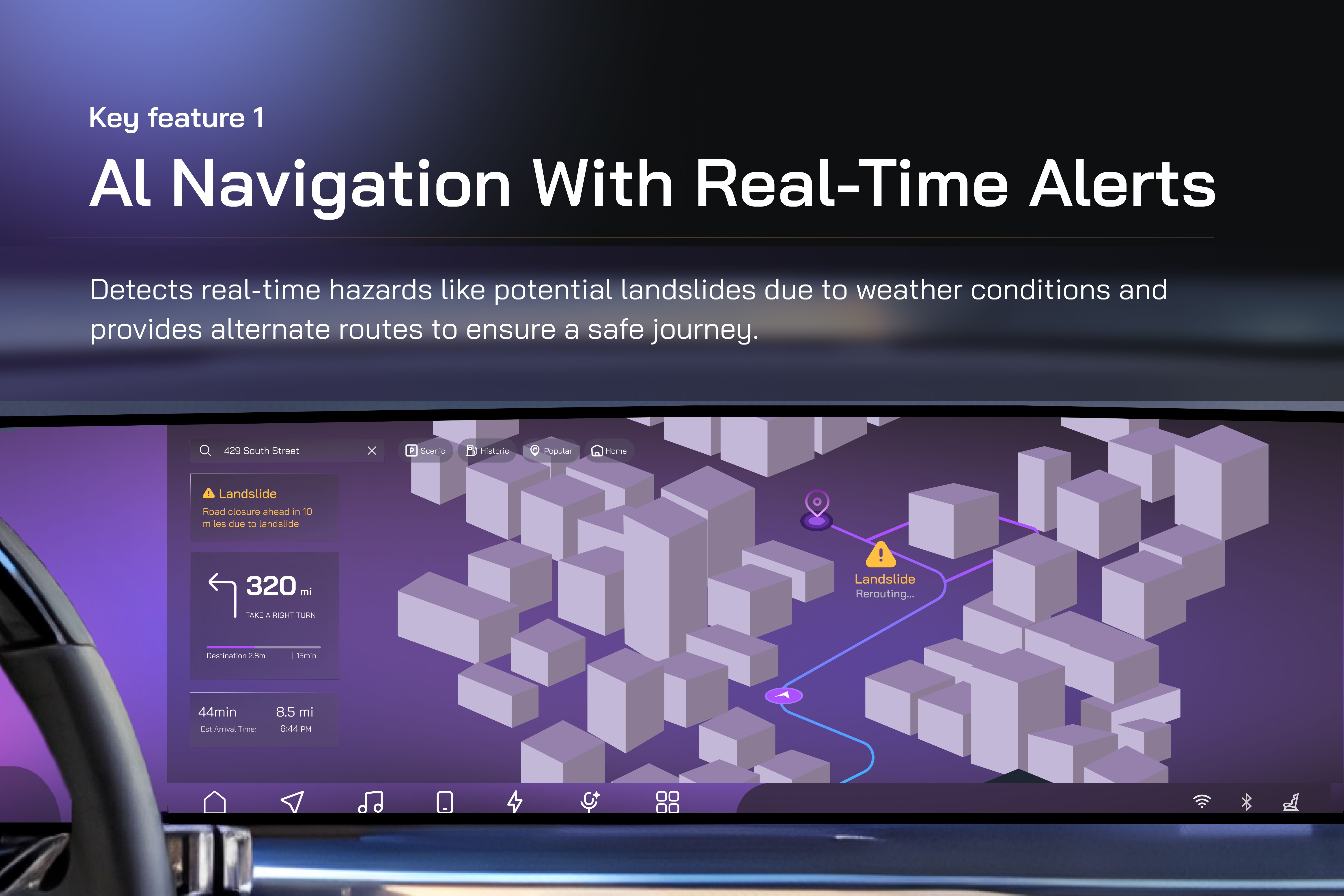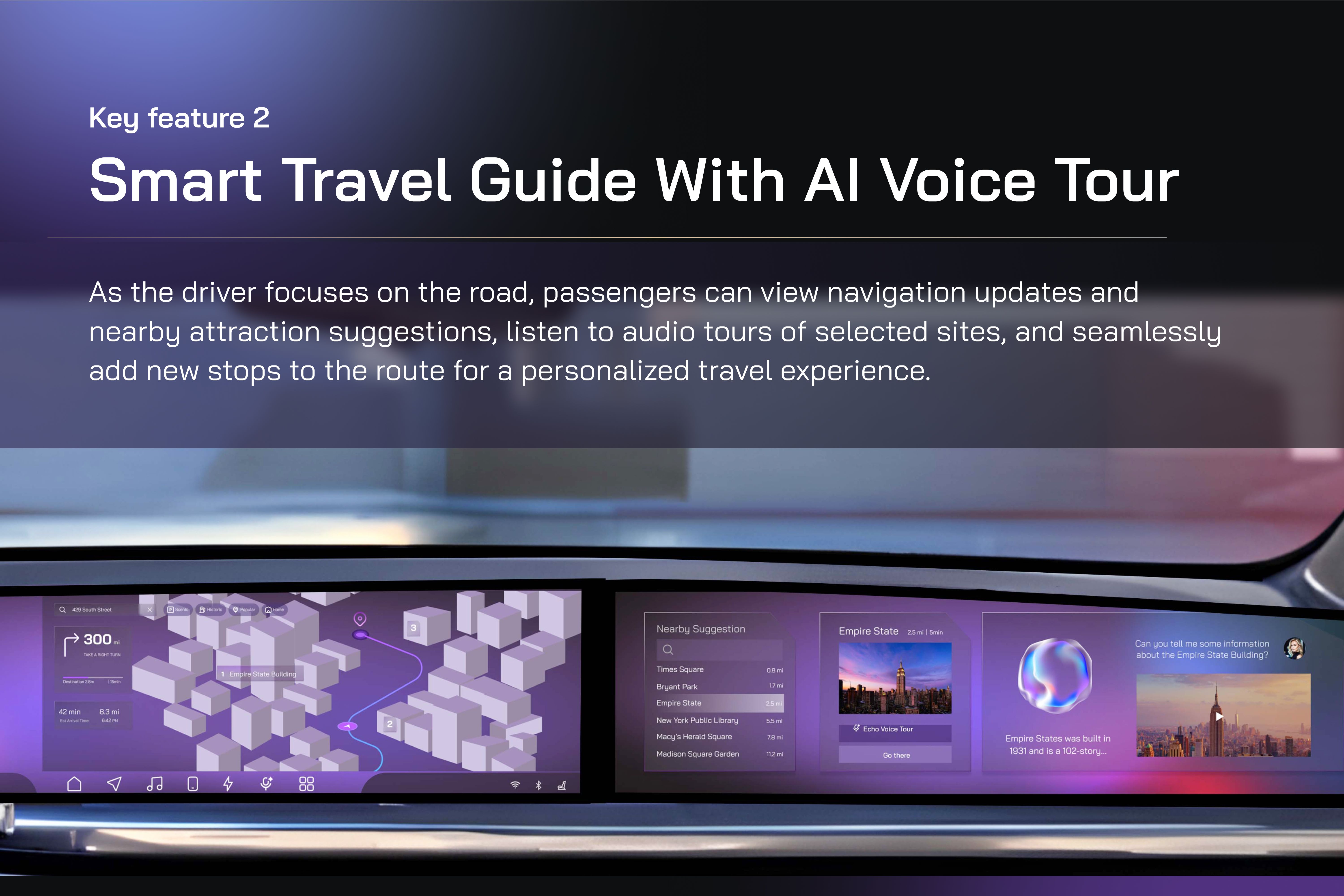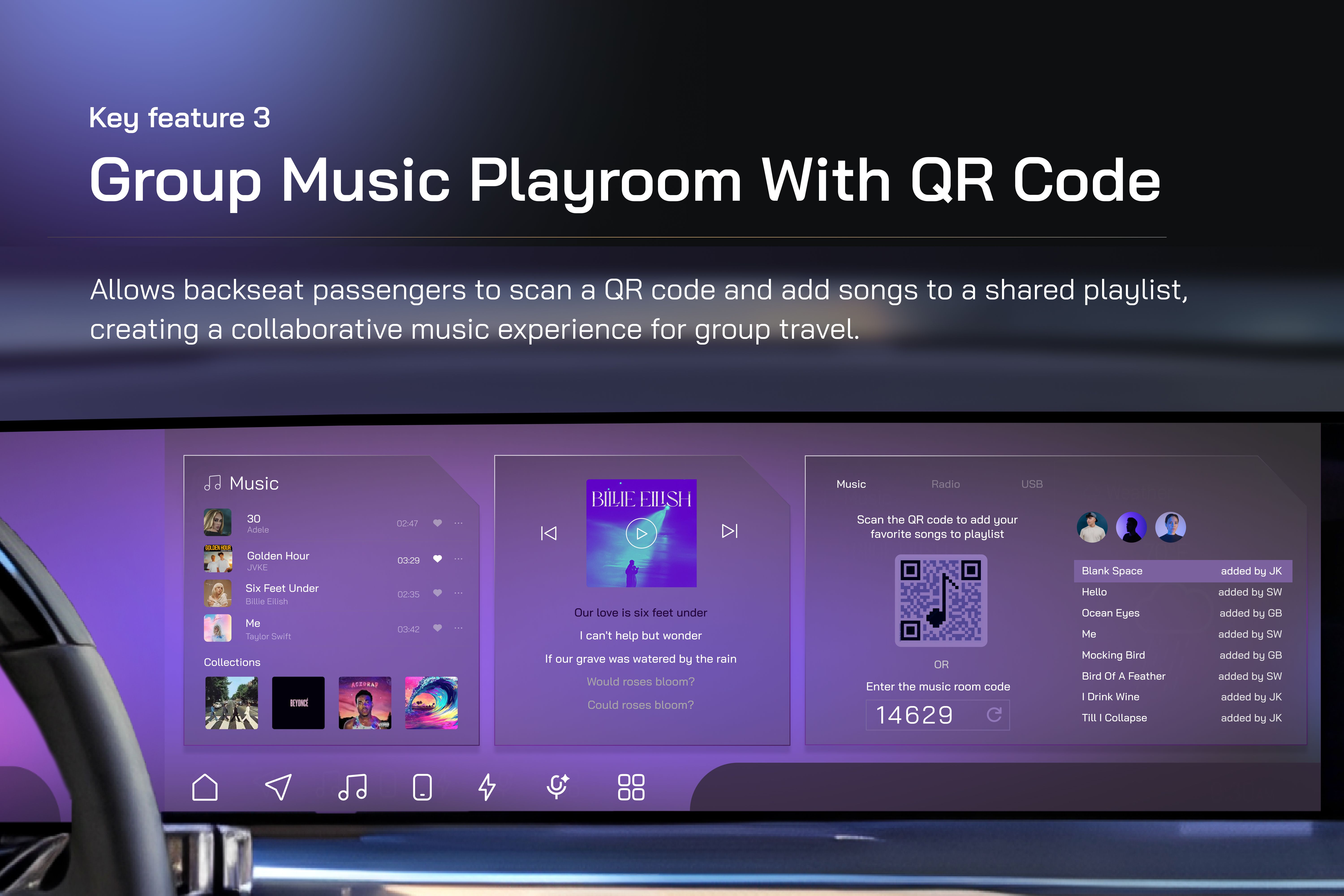
Designers
Yujia Ke, Ting Shu
Year
2025
Category
New Talent
Country
United States
School
University of Michigan
Teacher
James Rampton

Three questions to the project team
What was the particular challenge of the project from a UX point of view?
The primary UX challenge was balancing advanced AI functionality with minimal driver distraction. Designing an interface that provided personalized, real-time travel recommendations while ensuring safety required innovative thinking. The adaptive display had to present essential information intuitively for the driver while allowing passengers to engage with rich features like the AI Travel Guide and Group Music. Striking this balance while maintaining a seamless, luxurious user experience was key to elevating both safety and enjoyment.
What was your personal highlight in the development process? Was there an aha!-moment, was there a low point?
A highlight was witnessing how passengers could interact with the interface to co-create a personalized travel experience, such as adding stops or curating group playlists. The “aha!” moment came when testing revealed that even small tweaks, like adjusting the placement of the voice assistant controls, significantly improved driver accessibility. A low point was the initial feedback that the display felt cluttered; however, this led to an iterative redesign, streamlining content to make the system more intuitive.
Where do you see yourself and the project in the next five years?
In five years, we envision the Cadillac Escalade’s AI-powered HMI evolving into an industry benchmark for integrating technology with user-centered design. The interface will adapt to emerging technologies like AR and 5G, offering even more immersive travel experiences. Personally, I see myself continuing to lead UX innovation in the automotive industry, leveraging AI to create systems that redefine how we interact with vehicles, enhancing both connectivity and safety for future generations of travelers.


